



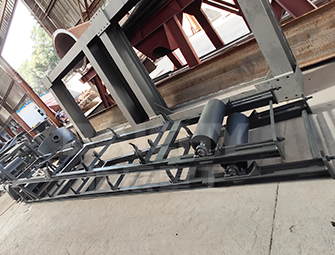
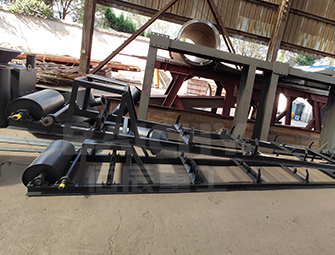


A high-quality rubber belt conveyor is used, which is strong in pressure resistance and wear-resistant; accessories are produced according to high-quality standards and have a longer service life.
C-shaped steel replaces the channel steel, and the special cast steel bearing seat is used. The main body of the frame is connected by bolts, which is more firm.
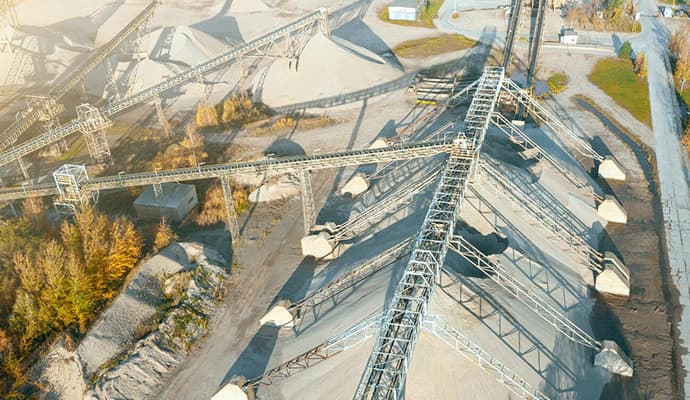
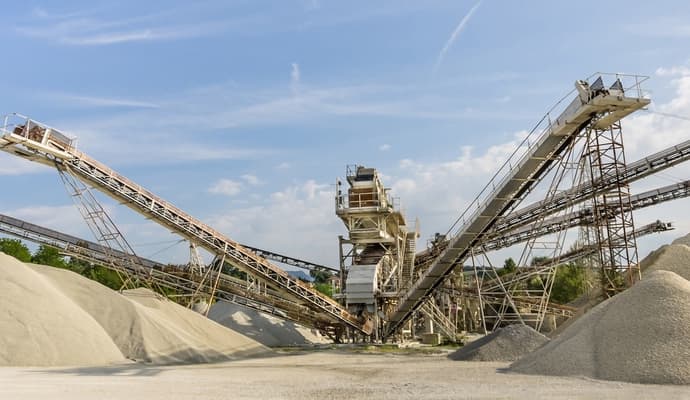
The belt conveyor is mainly composed of a frame, a conveyor belt, an idler roller, a pulley, a tensioning device, a transmission device, etc.
The belt conveyor is a continuous transport machine with a conveyor belt as the traction and carrying parts. The conveyor belt winds around the drive roller and various redirecting rollers, and the tension device give proper tension. When working, driven by the drive device, the friction and tension between the roller and the conveyor belt make the Conveyor belt run. The material is continuously sent to the conveyor belt, and moves together with the conveyor belt, so as to realize the conveying of the material.
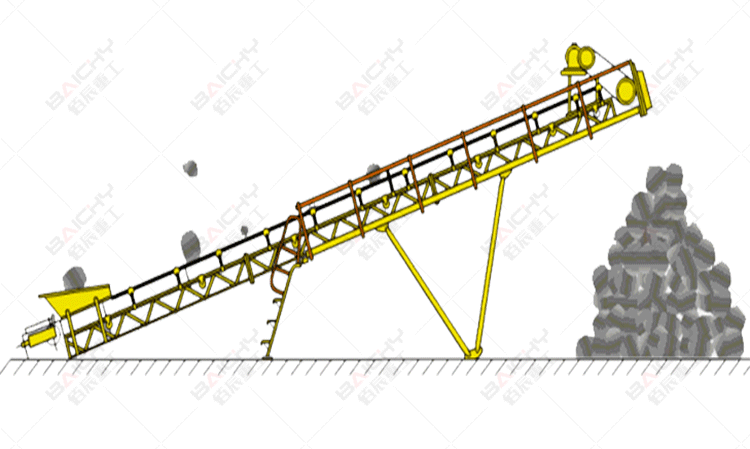
| Belt width (mm) | Conveying length (m) Power (kw) |
Conveying speed (m/s) | Conveying amount (t/h) | ||
| 500 | ≤ 12/3 | ≤ 12-20/4-5.5 | ≤ 20-30/5.5-7.5 | 1.3-1.6 | 40-100 |
| 650 | ≤ 12/4 | ≤ 12-20/5.5 | ≤ 20-30/7.5-11 | 1.3-1.6 | 80-120 |
| 800 | ≤ 10/4 | ≤ 10-15/5.5 | ≤ 15-30/7.5-15 | 1.3-1.6 | 120-200 |
| 1000 | ≤ 10/5.5 | ≤ 10-20/7.5-11 | ≤ 20-40/11-22 | 1.3-2.0 | 200-320 |
| 1200 | ≤ 10/7.5 | ≤ 10-20/11 | ≤ 20-40/15-30 | 1.3-2.0 | 300-500 |
Have Any Questions!
Don't Hesitate To Contact Us AnyTime.
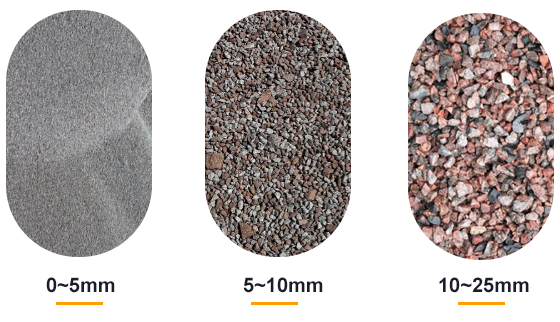
If you need further information,please fill in your questions and comments in the form below.
Representatives from Baichy machinery will be back to you within the hour,thanking you for your support to Baichy machinery
